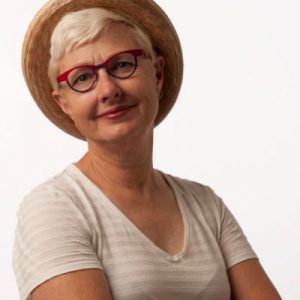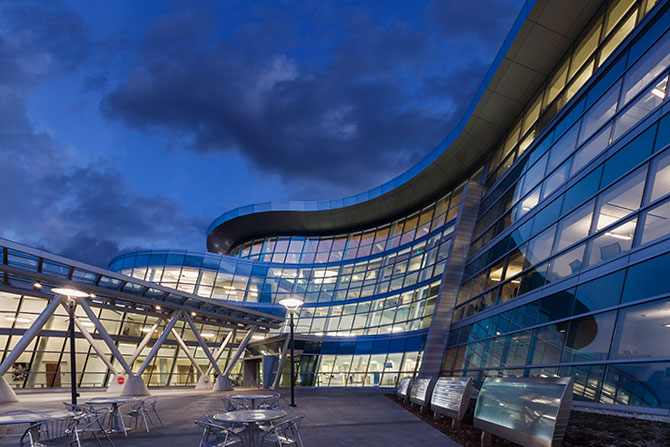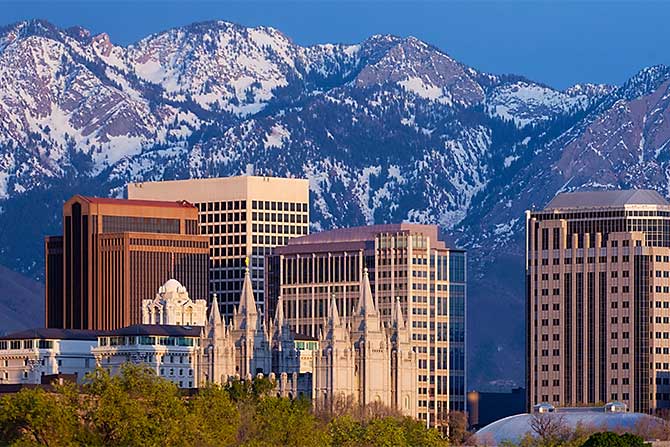Key Takeaways
- Integrity, environmental responsibility, collaborative culture and intentional growth are GSBS’s hallmarks.
- The firm embraces a unique, interdisciplinary mix of design and consulting services.
- Inclusive and diverse by design, GSBS employees come from 16 countries.
GSBS was founded in January 1978. Four highly respected and charismatic architects formed the firm, which has now grown to nearly 100 people, with services that include architecture, community planning, landscape architecture, interior design, sustainability, graphic design, experiential design and economic consulting. The firm’s portfolio is extensive, and they have been known from the very early days for environmentally responsible design, the quality of documents, inventive design solutions, business savvy, community involvement, and involvement in local and national AIA offices and movements.
Since ‘78, the firm has grown deliberately and steadily, with a clear focus on company culture, inclusion and professional integrity. That has meant never missing a payroll, never stiffing a consultant and not stepping on anyone to make it happen.
50 Years from Start-Up to Respected Firm
As Mike Stransky, FAIA, remembered it in his “Legends” interview:
“The work was grueling at times trying to get the work done, trying to figure out how to get the new job to keep a flow of projects into the office. Those are struggles, but those are all just meaningful moments in your career. You just find a way and make it happen.
“I knew Abe (Gillies, who passed away in 2022) in school. He was one year ahead of me. He had a partner — Bob Brotherton. They were looking for help, and I said, ‘I am interested, but not just in a job.’ Within a year, I had bought into the firm. He plowed the ground; I joined the team.
“We did everything. I ran projects. Abe ran the business and ran projects too. I started doing the marketing; I was the outside guy. Abe said, ‘You be AIA for the firm, I’ll take care of this, I’ll be the ballast.’ A couple of years later, through AIA, I got to know David. I knew Steve before, a little bit — he was a neighbor of Abe’s. We brought our firms and talents together. By ‘86, we got all the initials in there.”
In his interview, David Brems, FAIA, recalled:
“I had started my own firm. Right next door to us was Ann-Marie Boyden and et al, and et al hosted the AIA office. I went through all of the offices of the Salt Lake Chapter and AIA Utah, working with Mike Stransky and Stephen Smith. We’d have breakfast once a week at the Hotel Utah and talk about what we were doing and the profession, and what the future looked like. We decided to merge our two small firms — David Brems + Associates and Gillies Stransky — together. Abe Gillies ran the office and put out quality documents, and Mike got us through any door marketing the firm. I love to design, work in the office and work on the projects with our clients. It wasn’t very long after we merged that we added Steve Smith and became Gillies Stransky Brems Smith.”
In an interview with Stephen Smith, FAIA, he said:
“When Abe Gillies and Bob Brotherton started Gillies Brotherton in 1978, I said to Abe, ‘I want to come work for you,’ and he said, ‘No, I like you as my friend. We were neighbors. Maybe someday.’ In 1986, Abe called me and said, ‘We’re talking with David Brems about bringing him in and forming a firm with a broader practice. Now, I would like you to join me as my partner.’ Bingo. Yeah, that’s what I wanted to do. Mike and Abe had a very strong practice in industrial and some institutional work. David had a portfolio with private development, and I had some good planning experience. We thought that was a good, healthy merger of broader market areas as well as broader personality. We’re very different people and it turned out to be a very positive group in spite of our idiosyncrasies.”
Broad Mix of Services Defines GSBS
As such, GSBS has been an interdisciplinary design firm for a long time. As soon as Smith brought in planning as a service, they began to market themselves as a multifaceted service organization. Brems said, “It seemed like a natural idea to integrate — to complement each other. Over the years, we have identified key people which created a practice that is wide and broad. GSBS always has been and always will reflect the people who are here.”
And the very assortment of personalities and skills that was the kernel of the culture of GSBS is the driver of the 2025 iteration of the design firm. I met with a group of its owners and employees who strongly believe that they have to design as a choir full of strong but very different voices to cultivate the best ideas and, when refined, serve the client with the best possible project. Interestingly enough, the group didn’t talk much about their project successes (and there have been many), but rather their process — what it is like to work in a firm that is not very hierarchical and where good ideas are entertained from whomever they come.
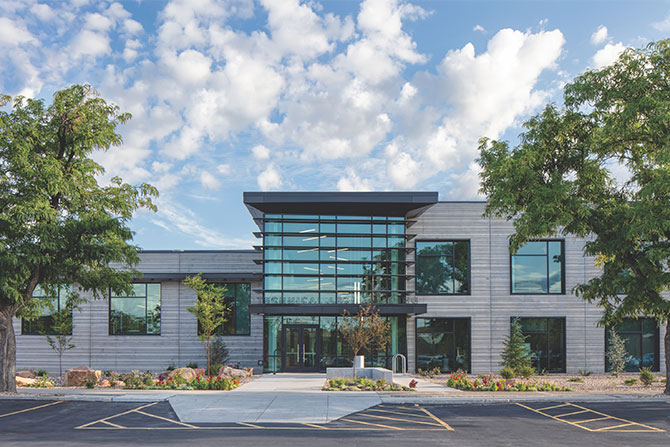
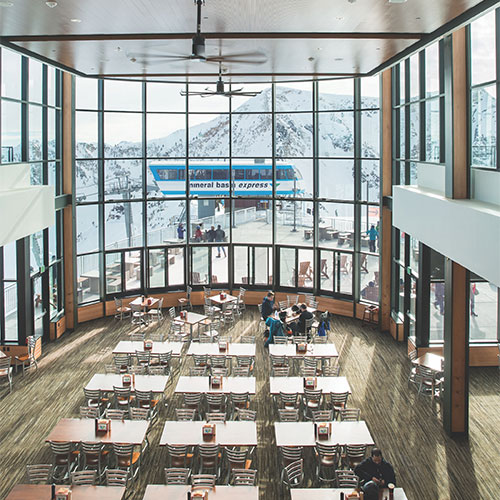
Three Factors Inspire the Firm’s Approach
Eric White, director of marketing and business development, says that GSBS’s vision is based on three pillars that have become their decision-making litmus test:
- Their people: They have great jobs, their people are compensated well, and they have a work-life balance.
- Design: They have the right tools and the right processes to generate a great approach. The product has to be of great quality.
- Business: They are smart about growing a healthy business. They are very careful about how they take care of the business.
Of these, people are their lynchpin.
Clio Raynor, AIA, an architect and principal of the firm, has been with GSBS for 20 years. “It is the only firm I have ever worked for,” she said, adding that she was drawn to the practice and stayed with the company because of the high quality of work that she saw and the culture of the firm that is demonstrated daily. Mentoring is not just given lip service, “everyone is always willing to take any time out of the day to help you be better. They will help you with anything — from changing a tire to designing a building.”
The client is baked into the GSBS design process because good ideas aren’t good ideas if they don’t work for the client. They are focused on their clients and their needs, creating specific design solutions for each client, not promoting a signature style.
“We invite them into our process. We are trying to solve their concerns. That is why our projects look so different,” Raynor said. “We provide expertise and strive to get the point that our client trusts us to give them what they need. Then we can push them beyond where they may have gone because they have the confidence that we understand what they want. If my client is surprised — I need to do better. I should have explained it better. Having an empowered team helps clarify communication.
“Good design ideas can come from anywhere. In our best work, it is an integrated design process and that comes with a certain ownership. Our firm believes that the best idea gets you to the best user experience. We work hard to provide the best solution to the challenge that the owner and user are having. We design to a vision, and the solution always drives back to the vision. The best solutions might come from a junior member team member. It is not driven top down; rather, the team leader sees that a great idea is a great idea. It is the best thing for the owner, the best thing for the firm, and the best thing for the designer. It isn’t about one person. And, depending on the project, it could be anyone managing ideas.”
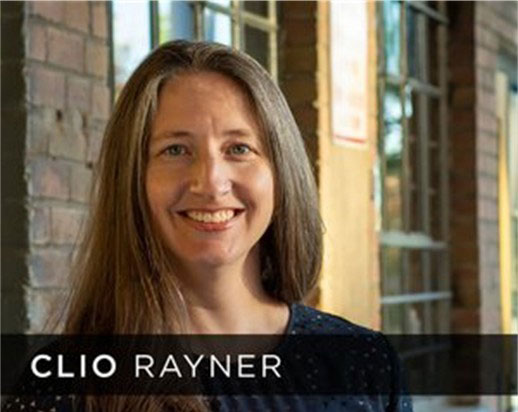
“The client is baked into the GSBS design process because good ideas aren’t good ideas if they don’t work for the client,” says GSBS Principal Clio Rayner, AIA.
Diverse Staff Fuels New Service Offerings
The leadership of GSBS has long recognized that helping individuals achieve their personal aspirations and goals has provided a way to expand their services, reputation and expertise. Stephen Smith was a planner as well as an architect, which allowed the firm to explore community planning in a way that helped build the firm’s portfolio. Erika Chmielewski is a planner of Hungarian/Polish extraction who found her way to GSBS by looking for an organization whose planning projects are not just conceptual but actually realized. When she said that was her goal, leadership provided the support to identify, pursue and capture projects like the community space on Mead Avenue that is currently under construction. She and her team are now looking at three more projects being built within the next few years. “GSBS got me there,” she says. “There are a lot of people in my corner.”
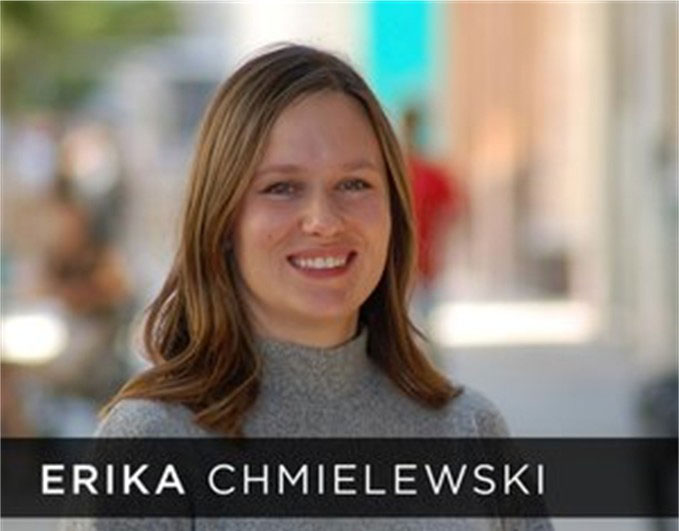
“GSBS got me there. There are a lot of people in my corner,” says Erika Chmielewski about how GSBS supports her career.
The same is true of Shoko Smith. Originally from Japan, she was hired in 2010 to help with marketing and graphic design. Recognizing that Smith’s skillset could help shape the immersive experience of a project, GSBS enlisted her to design signage and other graphic elements for built projects. That opened the door to experiential design. When she went to leadership and said, “I would like experiential design to be a formal discipline,” they embraced it and incorporated it into their menu of services. “Now, I am able to positively impact people’s lives, and it is really rewarding. I love the people at GSBS. I can always find someone that will help me. I enjoy working with anybody. We have a pretty flat organization.”
Stephanie DeMott, IIDA, is an interior designer who has been with GSBS for 25 years. She says that their office was recently remodeled intentionally with the idea that “Everyone is treated the same; flat, not as hierarchical. We only have two personal offices with doors and those ensure privacy for personnel matters. The remodel features a mural created by Traci O’very Covey, a celebrated Utah graphic designer with a decades-long connection to GSBS, that speaks to their core values: design excellence, sustainability, equity, people, positive evolution and creative vision.”
DeMott adds, “I am a principal, which is unusual for interior designers at architecture firms in Utah. When I came out of school, I knew I didn’t want to work for a furniture dealer or a facilities department. Turns out I did both, which was great because I worked for owners for four years and learned to see things from their perspective. When an IIDA colleague at GSBS said, ‘We are hiring, come and interview,’ I did. I feel that, at this firm, you have opportunities beyond compare; nobody is ever putting something in front of you as a barrier. They are all pulling together and drawing together. We also have our own projects. Cross-pollination is what inspires new ideas.”
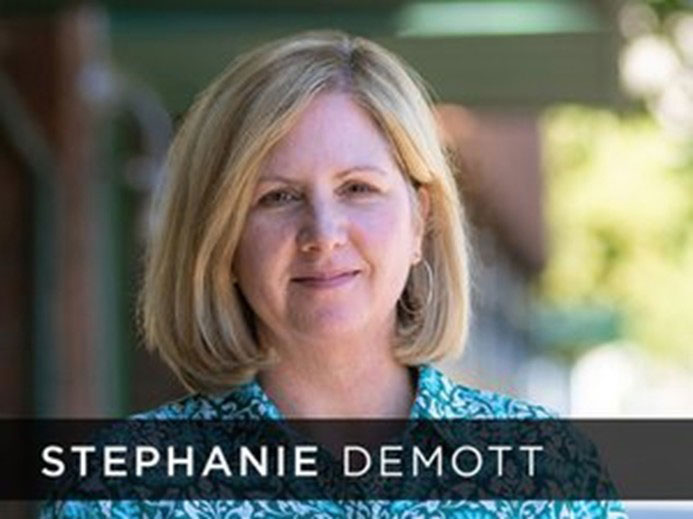
“I feel that, at this firm, you have opportunities beyond compare; nobody is ever putting something in front of you as a barrier. They are all pulling together and drawing together. Cross-pollination is what inspires new ideas,” says Stephanie DeMott, IIAD, GSBS Principal.
Landscape Architect Ben Rodes, ASLA, has been at the firm for six years. He interviewed on a Friday. GSBS has a very long-standing tradition called “Wine Down” at 4 pm on Fridays to decompress, chat and nosh. “As an interviewee, I was invited to Wine Down. It was very welcoming and open (maybe too soon?).” Rodes now leads the landscape architecture practice in Utah. “The firm is as strong as each individual discipline. Landscape architecture is not just support for an architecture project. We have designed some of the practice’s more complex projects, such as the recently finished rooftop of the Salt Lake Public Library.” Rodes, who navigates his practice from a wheelchair, is also a vocal advocate for accessibility in all of GSBS’ projects.
Clearly, GSBS wants people to pursue their passions. They believe that if they pursue what they enjoy and their work is tied to their personal goals, the happier they are going to be. As Chmielewski says, “I have never felt ‘less than.’ They pay attention to me. Working here, I have been rewarded with opportunities. If you put in the hard work, you get the opportunities.”
With Golden Anniversary Approaching, GSBS Looks to the Future
As GSBS nears its 50th anniversary, having effective succession plans is part of the secret sauce that provides the firm with continued viability and longevity.
Brems says, “A succession plan is always about people. Unlike some firms that only thrive on the charisma of the founding partners and then fold after they leave, GSBS was always set up to be successful after Generation One. It is about the next person, not about the person in the role now. The second generation are the people who were hired to help the first generation succeed. We always hope we are hiring people who want to grow, that we are creating an opportunity to grow.” He says that Principal Valerie Nagasawa, AIA’s, role of attracting talent is really important.
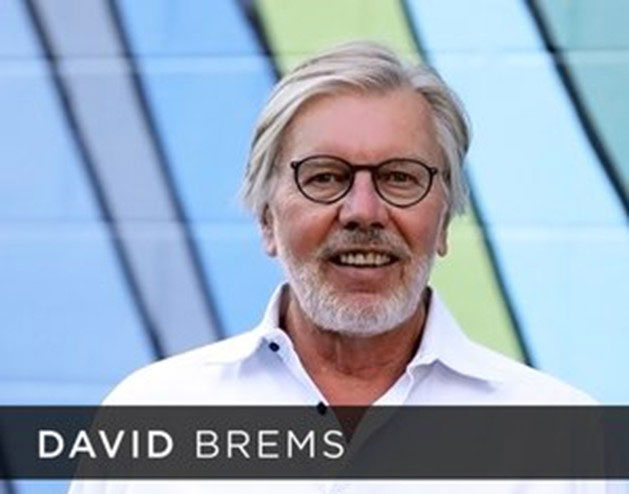
“Unlike some firms that only thrive on the charisma of the founding partners and then fold after they leave, GSBS was always set up to be successful after Generation One,” says Principal David Brems.
Nagasawa says, “It is our job to make the design profession appealing to a generation of people who have other opportunities. This means making sure people feel appreciated when they are here. It means continually looking at compensation and benefits in a profession notoriously known for low pay and long hours. We have forced ourselves to look at things differently: putting a lot of effort into building the different disciplines, having a pipeline, building design talent and helping the design professionals be more helpful to clients. Even though we know that not every employee will stick around, we want to make sure that they know they won’t be plugging away at restroom details forever.”
“We acknowledge there has been a disparity in our profession — whole groups of people who are not represented. There are people who have always been marginalized that haven’t had the connections, and there haven’t been enough role models. We have to take an active role in correcting that in every hiring decision by considering all qualified applicants and making more representative professions.”
What Does the Future Hold for GSBS?
As they look to continued success in the future, GSBS is keeping an eye on key factors, including:
- How they are going to harness AI so that they can spend less time on the things that are rote, which will give them more time to do the strategic work.
- A lot of national firms are opening offices in Utah, often to complete a large project. The market is very competitive. Will these firms stay and make the market even more competitive?
- Firms appear to be specializing more than they used to. It is not enough to be a good architecture firm; you have to have done a lot of the same sort of projects. Many clients are selecting off the portfolio. How do you formulate a message that will resonate?
- The industry must develop systems that address the monumental environmental challenges we face. The damage being done is outpacing our ability to respond — we have to shift toward anticipating disasters before they occur.
- Clients come expecting truly sustainable design. Part of the team’s role is to educate those clients on why each design decision matters — and to empower them to make choices that lead to better outcomes.
- Continuing to be the right firm for talented people. Evolving how the team practices and runs the business — so it can stay nimble enough to change as the world changes. Figuring out the right move to preserve the culture, even as change becomes necessary.
And aspirations? In addition to meeting the ongoing challenges of a thriving company in a changing world, GSBS is working to grow their Fort Worth practice and become known as a national-caliber design team, which means winning projects that show off the firm’s capabilities on a national stage.
They have lofty goals, and clearly, this is a team with everyone pulling in the same direction to achieve them.
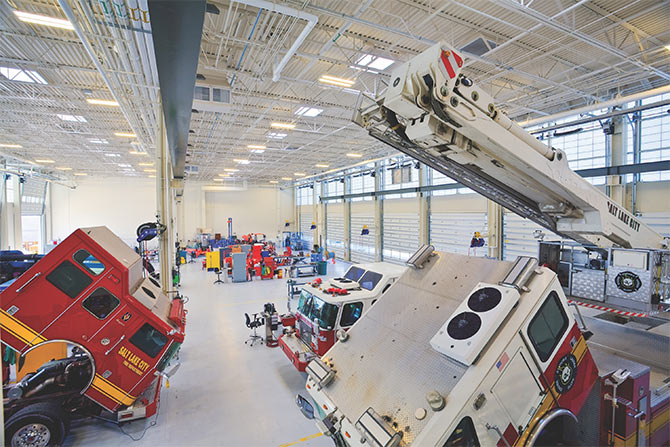
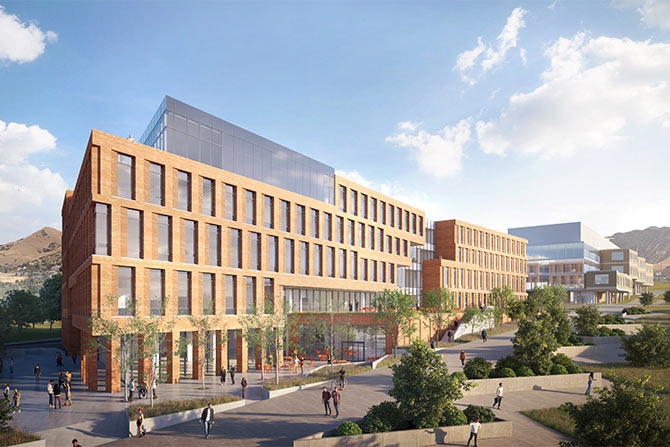

- Projects that GSBS is known for include the Olympic Speed Skating Oval, Salt Lake Public Safety Building, Natural History Museum of Utah, University of Utah College Nursing, Utah Valley University New Science Center, Cottonwood Corporate Center, and many industrial buildings, correctional facilities, and religious facilities.



